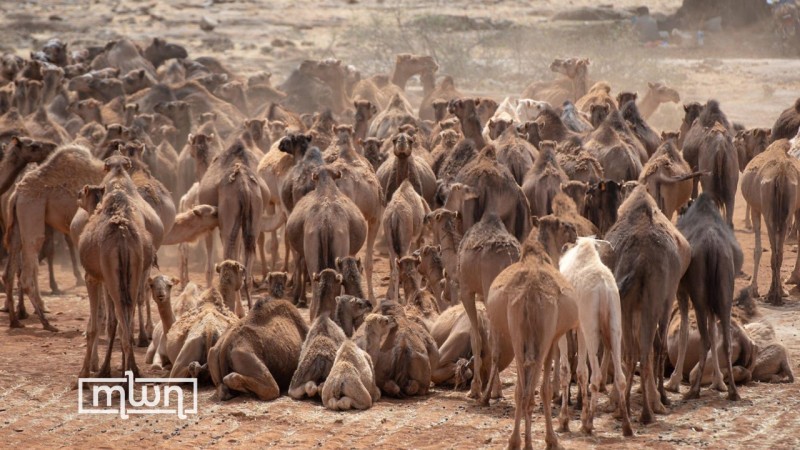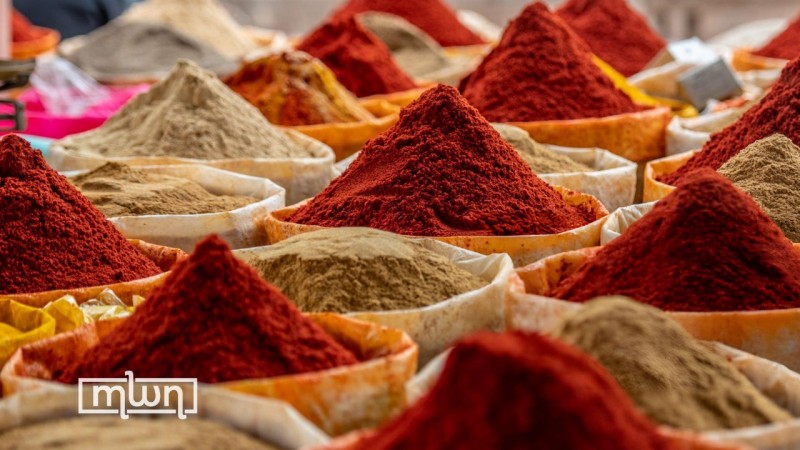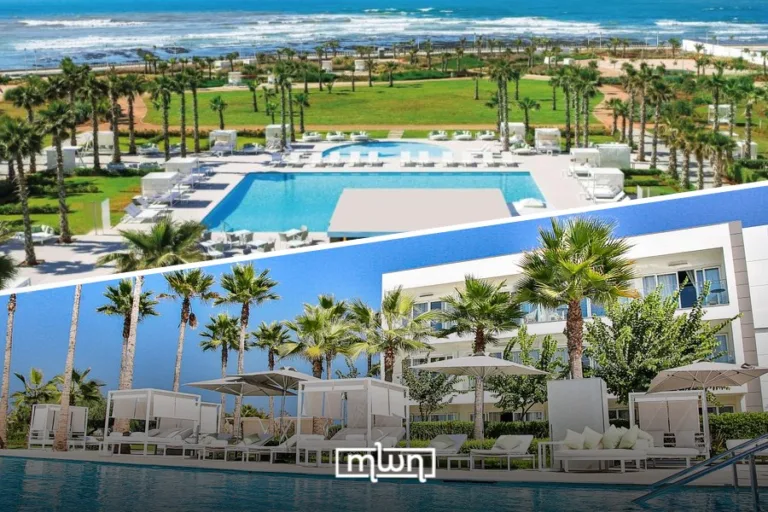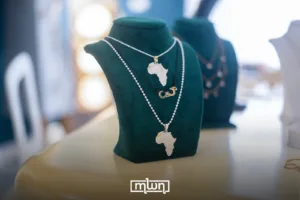Doha – Nestled along the western coast of Morocco, near the edge of the Sahara Desert, lies the Guelmim Oued Noun region, a strikingly beautiful area known as the “gateway to the desert.” This quiet corner of the North African country remains an unspoiled and uncrowded tourist destination bursting with rich cultural heritage and dramatic landscapes.
At the heart of the region lies the provincial capital of Guelmim, an atmospheric city characterized by its magnificent sandstone architecture, lively camel markets, and storied history as a Saharan trade hub. And surrounding Guelmim is a wonderland of oases, gorgeous beaches, epic gorges, and sleepy desert towns waiting to be explored. 
For adventure seekers, outdoor enthusiasts, culture vultures, or those simply wanting to go off the beaten path – the Guelmim Oued Noun region presents the perfect destination. The region’s nearby Atlantic coastline offers travelers some of Morocco’s most stunning and secluded beaches.
A hub of Saharan trade and culture
Guelmim has stood for centuries as a crucial hub for trade and cultural exchange. Its location at the crossing point between the High Atlas Mountains and the vast Sahara made it a natural meeting place for the many cultures of North Africa.
Historically, Guelmim lay along the important Trans-Saharan trade route. Camel caravans laden with gold, salt, textiles and more would stop in Guelmim before venturing deeper into the desert or onwards toward the vital port cities along the Atlantic coast. Traders from places like Timbuktu and beyond brought new goods, stories, languages, and ideas to mix into the already rich cultural stew of the region.
Located in the Asrir oasis, 13 km southeast of the city of Guelmim, the town of Nûl Lamta was known as one of the most important caravan and trading centers in the medieval era. Founded around the 8th century, the town experienced significant growth under the Almoravids (11th-12th century) thanks to its strategic geographical location and workshops specializing in shield manufacturing.
Later, as European imperialism expanded across North Africa in the 19th century, Guelmim remained a gateway linking Morocco proper with the resisting Sahrawi tribes of the interior. It was here that diplomacy and alliances between Moroccan sultans and Saharan tribal confederations were forged.
This history of encounter and exchange over more than a millennium shaped the unique and vibrant culture today on display in Guelmim and towns across the region. The Guelmimese people are rightly proud of this heritage, one built on independence, resilience, openness, and bridging divides, be they cultural or geographical.
Lively camel markets
For over three centuries, Souk Amhirich in Guelmim has served as an important economic and commercial hub, renowned on the national and international level. Spanning more than three hectares, this market hosts one of Morocco’s most famous camel markets. Buzzing commercial activity takes place every Friday and Saturday, with dozens of camel and livestock varieties put on display and sale, alongside modern sections selling fruits, vegetables, grains and more.
Hundreds gather each week to buy, sell, and trade camels brought in from across the breadth of Morocco’s desert regions. The air thrums with the sounds of bleating animals and rapid-fire negotiations punctuated by cries of delight or dismay. Prospective buyers carefully inspect each camel, checking teeth, feeling legs and humps, and scrutinizing every detail to ensure they secure the best deal. When negotiations conclude, new camel owners excitedly lead away their purchase, while boys in fraying Barcelona and Real Madrid jerseys dart through the crowds, adding to the energetic chaos.
For visitors, Morocco’s camel markets offer more than just bustling commerce and photo opportunities. They provide a direct window into the cultures and traditions of the nomadic Sahrawi people for whom camels remain essential and highly-valued.
Knowledgeable cameleers will gladly share with visitors their encyclopedic understanding of camel bloodlines, ideal breeds for desert treks or cargo hauling, and methods for finding the perfect mount. A patient ear can take in legends of famous racing camels, hear how the number of camels brought in a marriage dowry cement alliances between families, or learn intricate traditional beliefs about camels as symbols of love and fertility.
Beyond the marketplace lies a whole industry catering to camel upkeep from specialized feed sellers to workshops fabricating intricately decorated saddles, bridles, and accessories. It seems everything imaginable can be picked up, haggled over, or talked through over piping hot glasses of sweet Sahrawi tea.
For those with an eye for art, Guelmim’s camel market inspires the visual splendor emblazoned across the city’s magnificent sandstone architecture. Vivid murals and sculptures celebrate the camel’s exalted status as essential to Sahrawi cultural heritage and traditional desert life.
An oasis retreat
While Guelmim charms with its storied history and cultural riches, the surrounding landscape beckons visitors to venture beyond the city limits. Here one discovers the region’s peaceful beauty in its palm oases, hidden canyons, and seaside vistas.
Of the many oases dotting the Guelmim area, the villages of Tighmart and Asrir stand out as delightful places to experience traditional oasis culture. Both lie only minutes outside Guelmim city center but feel enveloped in pastoral tranquility. Palm fronds rustle gently in the desert breezes. Children play beneath the shade, laughing and chattering without care. The song of babbling brooks winding between the towering palms and bright flower beds serenades visitors strolling the tidy earthen lanes.
In Asrir locals will proudly show visitors their carefully tended date palm plantations and small family cereal crops nourished by the life-giving springs at the oasis core. A local guide can explain the ingenious khettara irrigation system which sustains the vibrant Asrir oasis and has done so since ancient times. Originally developed in Persia before spreading across North Africa and Spain, these irrigation channels gently catch water and use gravity to transport moisture kilometers away without need for modern pumping systems.
The khettaras exemplify both sustainable agriculture and the lush beauty possible even in arid landscapes. Their presence allows fig, olive, and pomegranate trees to thrive around Asrir’s whitewashed homes alongside carpets of bright wildflowers.
Trips or visits with a focus on cultural connection help support Asrir residents working to share their community and heritage with visitors. Passionate local guides enrich trips to Asrir and around Guelmim through their dedication to sustainable and educational tourism. Excursions include visits to working henna and honey cooperatives empowering regional women artisans or treks out under the stars to glimpse ancient Sahrawi tribal Guedra dances performed beside crackling bonfires.
Eight kilometers farther lies Tighmart, the largest and most developed oasis in the Guelmim region. The tended palm groves admit visitors into an agrarian world little changed over generations. Tighmart provides a wonderful glimpse into a traditional pre-industrial Saharan lifestyle still thriving in the modern world.
Strolling through the narrow palm lanes, visitors may happen upon village women washing clothes or hammering out fresh strips of barkcloth. The village artisans still weave from locally harvested Doum palm fronds many items that are essential to oasis life. Their sturdy baskets haul crops at harvest time or serve to store hand-ground grains. Thatching palm mats roof quaint mudbrick homes which keep out the summer heat. A variety of combs, ropes, bedding, and fences all take shape thanks to the talented fingers of Tighmart’s women.
No less captivating are glimpses into time-honored customs around architecture and village governance. Correctly laid houses conform to ancient geomantic principles aligned with the cosmos and natural landscape. By tradition, village councils continue to meet each week under the shade of the largest palm to debate local issues or dispense justice in disputes. Knowledge passes between generations not through books but by young apprentices learning at the heels of their elders.
While comfortable lodging within the heart of Tighmart remains scarce, the oasis periphery offers several excellent hotels to serve as rural hideaways. From there, visitors can delve into village life by day before relaxing to home-cooked cuisine and Saharan night skies after dark. Local guides offer camel treks or 4×4 desert excursions to discover ruined ksour and kesbas and experience the oceanic dynamism of the vast Sahara.
The beaches of Plage Blanche
Travelers who follow the N1 highway 60 kilometers west from Guelmim will happen upon the region’s breathtaking Atlantic coastline. Here the desert relents to reveal gorgeous sandy beaches.
Amidst Saharan dunes facing the Canary Islands lies La Plage Blanche (The White Beach), a heavenly spot that entices visitors with dreams of escape. An unbroken 50 km long swath of sand melds with ocher ridges, seen from afar as a straight white belt – hence aviators dubbing it the “White Beach.” The name, an apt description of this stretch of Saharan coastline blurred by misty ocean spray, remains to this day.
La Plage Blanche is just undisturbed rolls of fine sand – enigmatic in its vanishing lines. Only the sea appears, waves guarding a realm of opaque waters, as bordering desert imposes rolling valleys strewn with rocks and cacti, which a stony riverbed slices below.
La Plage Blanche retains the most agreeable and widest sands. At low tide the uniquely white sand firms up pleasantly underfoot – qualities attracting European and Moroccan beachgoers alike. Conveniently 45 minutes from Guelmim airport, the area leverages its location opposite the Canary Islands to grow as a year-round Moroccan destination.
Beyond amenities, the beach banks on an appealing year-round climate, with winter lows around 17°C and summer highs of 28-30°C. Like an oceanfront oasis, La Plage Blanche harbors all the elements for a next-generation tourism hub.
For less rugged travelers, Tan Tan’s long seaside corniche offers a special treat. Wide walking paths give beach access plus striking views over dozens of scenic fishing boats bobbing offshore. The adjoining town thrums with an authentic slice of coastal life exemplified by waterside cafes and colorful piles of fresh catches still flopping on the docks. More exquisite seafood eateries line the winding streets just off the corniche or beach.
What else?
Westward along the coast from Plage Blanche sits the former colonial town of Sidi Ifni, one of southwest Morocco’s true hidden gems. Nestled atop an oceanfront bluff, this isolated outpost offers a tranquil slice of the Mediterranean miles away from the country’s storied tourist trail.
Remarkably well-preserved art deco structures left over from the town’s days as a 1930s Spanish protectorate give Sidi Ifni a distantly familiar yet wholly exotic atmosphere. Whitewashed commercial buildings, elegant Spanish townhomes, grand municipal edifices, and a sweeping Spanish Boulevard structure reveal an architectural unity more reminiscent of Southern Spain than Morocco. Meanwhile, local street life buzzes in the shadow of these 20th century artifacts, as ordinary Ifni residents go peacefully about their days alongside the few curious visitors.
The resultant experience provides travelers a destination genuinely unlike any other in Morocco. Those who slow their pace and spend idle days strolling Sidi Ifni’s breezy boardwalk and gently crumbling streets tap into a different era much closer to home yet still far removed in the hushed dreamscape of coastal Morocco’s bygone years under colonial rule.
Visitors who pass beyond the beautiful painted gates welcoming travelers to the city of Guelmim soon discover why “gateway to the desert” remains such an apt designation for the entire Guelmim Oued Noun region. Anchored by its namesake provincial capital, the surrounding area serves up a visually stunning and culturally intoxicating mix of Saharan commerce, tranquil desert oases, fierce Atlantic coastlines, and sweeping history.
So answer the call and begin your own journey into the beauty, mystery, and adventure awaiting you in the remarkable Guelmim Oued Noun region of the Moroccan Sahara.















